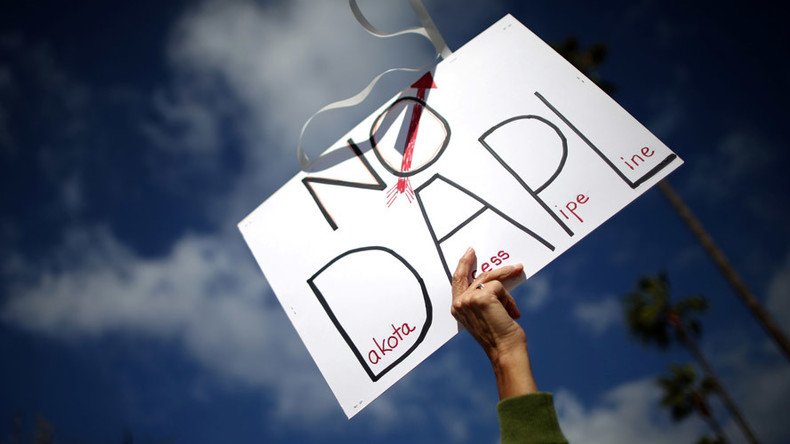Federal appeals judges lobbed tough questions at the attorney for the Standing Rock Sioux Tribe, the government and the company constructing the Dakota Access Pipeline. There was no indication when the judges will rule on the injunction.
A three-judge panel of the Circuit Court of Appeals for the District of Columbia had a range of questions for the government, pipeline owners and tribal lawyers on Wednesday.
Judge Cornelia Pillard wanted clearer answers about the required consultation the government did with the Standing Rock Sioux Tribe, as well as the boundaries of where the tribe wants work stopped.
"If we're going to issue an injunction we need to say where it stops," said Pillard, who told the tribe's lawyer she was "flummoxed" trying to understand his argument, according to AP.
Judge Janice Rogers Brown suggested the tribe should have filed its underlying lawsuit before July.
Judge Thomas B. Griffith questioned why the pipeline company wouldn't halt work near the lake before seeing whether they received the government's permission to continue construction on government land bordering and under the lake.
"It looks like you're forcing their hand," Griffith said.
Pipeline lawyer Miguel Estrada said the company had been told obtaining such permission was a formality. Griffith responded: "It's not a formality now, is it?"
Estrada also said his clients "went the extra mile" to accommodate tribal concerns.
If completed, the $3.8 billion Dakota Access Pipeline would travel across four states and carry nearly half a million barrels of crude oil daily from the Bakken oil fields in North Dakota through North and South Dakota, under the Missouri River, and through Iowa to an existing pipeline in Illinois.
The Standing Rock Sioux Tribe says the pipeline impacts sites of historic, religious and cultural significance and threatens the water supply for its reservation and millions of people downstream. Its fight has spurred scores of people to join a protest encampment on government land in southern North Dakota. It has been called the largest gathering of Native American tribes in a century. Protesters have said they won't leave until the pipeline is defeated and plan to stay into the winter.
On September 9, following a decision by a lower court to only halt construction on one side of Lake Oahe, the Obama administration weighed in and stopped construction for 20 miles on either side of the Missouri River at Lake Oahe.
While the project has been cleared by all relevant federal agencies, the Standing Rock have said they were not consulted, claiming pipeline construction crosses through lands that hold burial and cultural artifacts sacred to the tribe yet outside its reservation.
The government has not revealed when that delay will be lifted, and recently released plans for a series of meetings with tribal leaders to discuss "infrastructure projects" and "timely and meaningful tribal input," according to the Dallas Morning News.
The judges didn't say when they'd rule.

